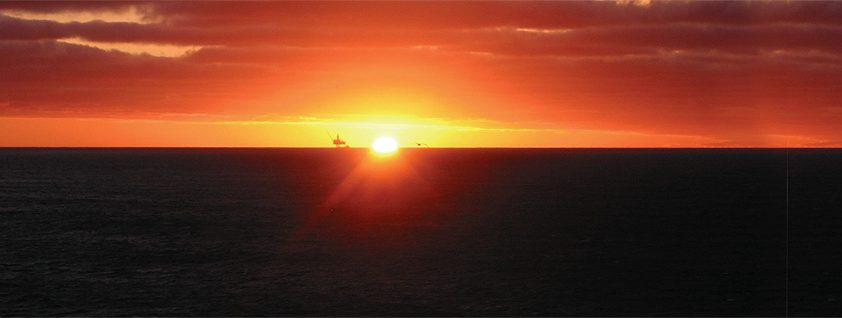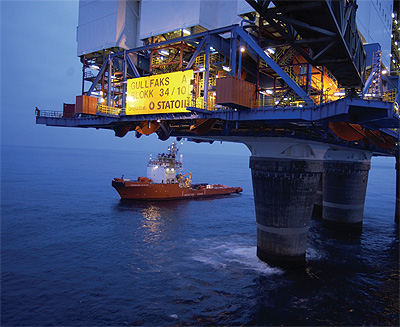
Statoil is an integrated oil and gas company with substantial international activities
A true adventure
Based in Norway, the company was established in 1972 and is the largest petroleum company in the Nordic region.
Statoil is one of the main net sellers of crude oil in the world, and a major supplier of natural gas to the European continent. The organisation also operates around 2000 service stations in nine countries. Statoil’s main office is located in Norway’s oil capital, Stavanger.
Adopting new technology has allowed Statoil to achieve the first offshore development in the Barents Sea – Snøhvit, which is the world’s northernmost LNG project. This project involves bringing huge volumes of natural gas to land for liquefaction and export from the first plant of its kind in Europe. Snøhvit’s gas liquefaction plant also ranks as the most energyefficient in the world.
The Snøhvit development comprises three fields – Snøhvit, Albatross and Askeladd. These lie in the Barents Sea, about 140km north-west of Hammerfest in northern Norway. Snøhvit will be the first major development on the Norwegian continental shelf without a fixed or floating unit. Instead, a subsea production system on the seabed will feed a land-based plant on the north-western coast of Melkøya, at the entrance to the shipping channel into Hammerfest via a 68cm ID, 160km gas pipeline. In addition, two chemical lines, an umbilical and a separate pipeline for transporting  carbon dioxide were laid in the summer of 2005.
carbon dioxide were laid in the summer of 2005.
Both the subsea production system located on the field and the pipeline transport will be monitored and controlled from a control room at Melkøya. Here, operators will be able to open and close valves on the seabed 140km away with signals transmitted along fibre-optic cables, and with high-voltage electrical and hydraulic power lines.
With a price tag of NOK 59 billion, the Snøhvit plant at Melkøya ranks as the largestever industrial development in northern Norway. Deliveries from north Norwegian companies totalled NOK 1.8 billion at 30 May 2004 – three times the original forecast. Some 450 to 500 jobs will also be created in the Hammerfest area when the facility comes on stream, including around 190 permanent posts in Statoil’s operations organisation. The plant is set to remain operational for 25 to 30 years, and annual deliveries worth some NOK 240 million will be required from local and regional suppliers. During the construction phase, the project has contributed to the creation of new companies in Hammerfest and its surrounding area. Furthermore, half the contracts for the Snøhvit project have been placed with the Norwegian supplies industry – well above the 36 to 38 per cent share originally expected to go to domestic companies.
Although the project has been a complete success so far, Statoil has had to overcome many hurdles to get to the position it is in today. The main challenge the company faced during this project was to ensure impacts on the environment were kept to a minimum. Therefore, every effort was made to develop technology, which caused little harm to the surrounding area. As a result of this, Snøhvit is ranked as one of the most advanced technological and environmental projects ever undertaken.
As operator of the Snøhvit project, Statoil aimed to produce the field and its land-based facilities at Melkøya outside Hammerfest without harmful discharges to the sea. More assessment studies have been carried out for Snøhvit than on any other project Statoil has so far sought to develop. One benefit is that none of the installations in the field have interfered with fishing, and in addition the subsea facilities can be over-trawled. The field has also been produced in a closed system, which prevents harmful emissions or discharges. Furthermore, a biological treatment plant on land has been built to deal with environmentally harmful components.
Statoil’s HSE target for Snøhvit is that the development and production phases will cause zero accidents, lost-time injuries, occupational illnesses, material loss or damage to the environment. So far, during the development phase, the company has successfully achieved highly satisfactory safety results, and plans to continue providing high levels of HSE throughout the operational phase of the project.
Construction on the Snøhvit project started in the first half of 2002, with contractual gas deliveries scheduled to commence at the beginning of December 2007. As a whole, the Snøhvit LNG project represents the development of new technology for Norway’s petroleum sector, opening additional markets for Norwegian gas and enhancing the industry’s flexibility. For Statoil, deliveries from the Snøhvit development will provide the company with entry into the fast growing US market for natural gas. Furthermore, Spain represents another important market for the organisation with 1.6 billion cubic metres of gas being shipped there from Snøhvit every year. To date, Statoil has managed the Snøhvit project with complete success, which has provided the company with an unrivalled reputation in the offshore industry.
Statoil
www.statoil.com